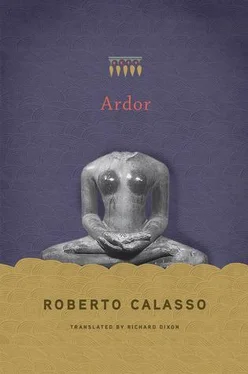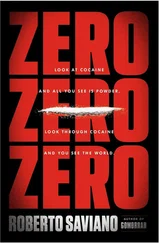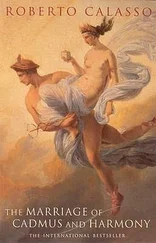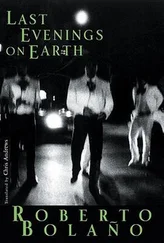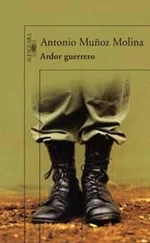Violence — though limited, mitigated, described by way of euphemism — could not be eliminated, insofar as it was the only adequate, irreversible signal of that hiatus, of that discrepancy between visible and invisible which nothing could heal. Between the two extremes there was a cavity, an open wound. Which could be — temporarily — healed only on condition that it was reaffirmed in the violent action of the sacrifice: “He thus heals the sacrifice by means of the sacrifice.” If this happens, the unbridgeable ravines of the sacrifice are transformed into a celestial flight path. That hawk, which until a moment earlier had been an altar built with ten thousand eight hundred bricks, as many as the hours of the Vedic year, would then rise up and fly. An altar made of time. And time could not be deprived of the power, indeed the obligation to kill.
It is never clearly stated in the Vedic texts that there is a swerve, a gap, a break between visible and invisible, that the visible ends up suspended over the void. Not all of the forest doctrine (an expression used to indicate esoteric teaching) was to be enounced — or to be enounced in certain terms. There remained something precipitous, looming, which corresponded to the makeup of that which is. If sacrifice were only an illusion of particular groups of people living in remote times and conditions, then the life that ignores it would not feel compelled to remember and rediscover it, disguised, subtly recurrent and evasive, like a blackbuck antelope in the midst of traffic.
* * *
Certain ideas of the Vedic ritualists could be set out without resorting to their categories and reasoning, but using words acceptable even in a twenty-first-century university lecture hall. Like this, for example: the relationship between the visible and invisible is superimposed onto that between the discrete and the continuum. In the same way that the visible will never manage to penetrate the invisible, however much it expands and however transparent and significant it becomes, so too the discrete will never manage to coincide with the continuum, which envelops and surpasses it. There is a break point, between the two series, often recognizable by some trace of blood. The invisible and the continuum belong to the mind and express its sovereignty. The visible and the discrete are the expansion of what is outside the mind, innervated by the mind but not reducible to the mind. All that takes place is an exchange and an uninterrupted passage between the four corners of this quadrangle. The point where the paths meet and cross is the center of the quincunx, the fifth stone on which are laid the stalks of the soma before the other four stones strike it, rip it apart, so that the intoxicating juice can drip from it.
XX. THE FLIGHT OF THE BLACK ANTELOPE
The blackbuck is considered by many to be the most beautiful of all antelopes because of the male’s striking black and white pelage and his long spiral horns. The species once roamed in huge herds throughout the open woodlands and cultivated tracts of India, making it one of the most conspicuous and most hunted members of the country’s fauna. These large herds are now gone, and the animal clings to the last vestige of its former range in small scattered groups.
— G. B. Schaller, The Deer and the Tiger
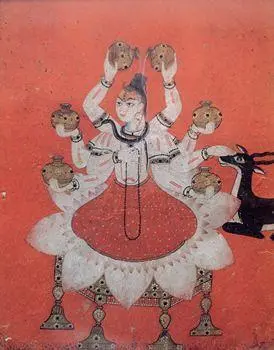
Mṛga means first of all the black antelope. But the word mṛga describes any wild animal. What happened to the black antelope implicated the whole world of nondomestic animals, a world once synonymous with hunting. Mention of the black antelope stirred the feeling of a whole way of living and thinking, which had already been erased by the Vedic period, and yet continued to pulsate within every thought. Karl Meuli went too far in his attempt to trace the phenomenon of sacrifice in its entirety back to hunting. But no theory of sacrifice would be complete unless it involved hunting — and the age of the hunter.
Āryāvarta, “the Land of the Aryans,” is the space where “by nature the black antelope roams”—making it “the country fit for sacrifices.” Civilization is the place for sacrifice, and sacrifice can be celebrated only where the black antelope — an animal that cannot be sacrificed — roams freely. At the same time, the Śatapatha Brāhmaṇa states six times: “The skin of the black antelope is the sacrifice.” And the ritualists did not waste words.
The black antelope is, indeed, not sacrificed but is killed all the same. Indeed, the scene of its primordial killing can be seen every night in the sky, where the antelope is Orion, shot by Sirius’s arrow. Meaning: the antelope is Prajāpati, shot by Rudra’s arrow. But then, when the antelope was shot by Rudra, “the gods found it and stripped its skin, carrying it [the skin] away with them.” On that occasion, it is said, “the sacrifice escaped from the gods and, having become a black antelope, it wandered.” Rudra’s attack on Prajāpati was therefore already a sacrifice. But not only that: the skin of the antelope, an animal that cannot be sacrificed, becomes part of the sacrifice, indeed it is used “for the completeness of the sacrifice.” Without the aid of that skin, the sacrifice would be incomplete. And it would lack exactly what was forbidden in the sacrifice. And yet the sacrifice is not effective unless it covers everything. The impasse seems irresolvable. But what is the purpose of rituals if not to resolve through gestures what thought cannot resolve? And so the antelope skin will become “the place of the good work.”
* * *
At every point during the ceremonies it is taken for granted that every event belongs to at least two worlds — the heaven and the earth, the invisible and the visible. But how can this be shown to the person who is consecrated? How can he stay in both worlds? Two black antelope skins are laid on the ground, “joined along the edge, so that these two worlds are, in a certain way, joined along the edge.” Almost as if these skins were two worlds of equal extension and not dissimilar appearance, which are stitched together along the edge and then communicate violently through holes through which a thong is made to pass. They are the two ways of contact: osmotic adjacency, along the edges of the world, where things seem no longer to belong to one but to two worlds; and incursion (the holes), which explains the sudden suction occasionally exercised by one world on the other. The sacrificer can be consecrated only if he places himself on those two antelope skins stitched together.
At a certain point the sacrificer will take a black antelope skin and will sit on it: “Its white and black hairs represent the ṛc and the sāman verses: in other words, the white the sāman and the black the ṛc ; or vice versa, the black the sāman and the white the ṛc. The brown and yellow hairs, on the other hand, represent the yajus texts.”
Sitting on a black antelope skin: only this gesture enables the sacrifice to be complete. And, since the sacrifice is everything, it cannot be incomplete. And so there is an acute and ever-recurrent anxiety about incompleteness: will the sacrifice have a head? Or will it, in any case, be complete? These questions ring out, they pulsate. Only the act of sitting on the black antelope skin can bring a satisfactory answer. Why? There is, of course, a story behind it: a very obscure and ancient story. The pact between the gods and sacrifice is not immediate, indeed: “The divine nature … shows no particular affinity with sacrifice.” But the gods know it is only through sacrifice that they can defeat their adversaries: the Asuras, the Rakṣas. They also know that it is only thanks to sacrifice that they are now immortal. But sacrifice is not knowledge that is revealed and absorbed once and for all. Nor is it a well-defined corpus. The sacrifice, by its nature, extends in every direction: but how far? According to the Maitrāyaṇī Saṃhitā , “the gods saw the sacrifices one by one.” It was a gradual, uncertain, laborious achievement. And often, where the gods did not succeed, the ṛṣis did — as happened, for example, to a serpent-like ṛṣi , Arbuda Kādraveya, who taught the gods how to drink soma without being overcome by the intoxication. The gods then had to humbly follow what a seer had known before they had. This, for a long time, was life, before humans appeared — and before they too tried to gain everything through sacrifice. But the path was far more treacherous. If sacrifice had fled from the gods, this occurred far more often with men. And why, from the very beginning, had the sacrifice fled and, “having become a black antelope, started to roam freely”? No text gives a satisfactory answer. But an underlying point has to be borne in mind: the antelope is an animal that cannot be sacrificed. The antelope is the wild animal par excellence, the hunter’s prey. Yet only domestic animals can be sacrificed — five of them, to be precise, including man. There again, we read several times that “the black antelope skin is the sacrifice.” This is therefore how things are: the animal that “is more or less the emblem of the sacrifice” cannot be sacrificed. At the same time, we read that “where by nature the black antelope roams is the place fit for sacrifices; beyond that is the land of the barbarians.” Or again, with great conciseness: “Heed the laws of the country where the black antelope is.” The boundaries of civilization are marked by where the black antelope roams freely, which corresponds with the places where sacrifice is practiced. Only a wild animal can mark out the perimeter of the land where the law rules.
Читать дальше
